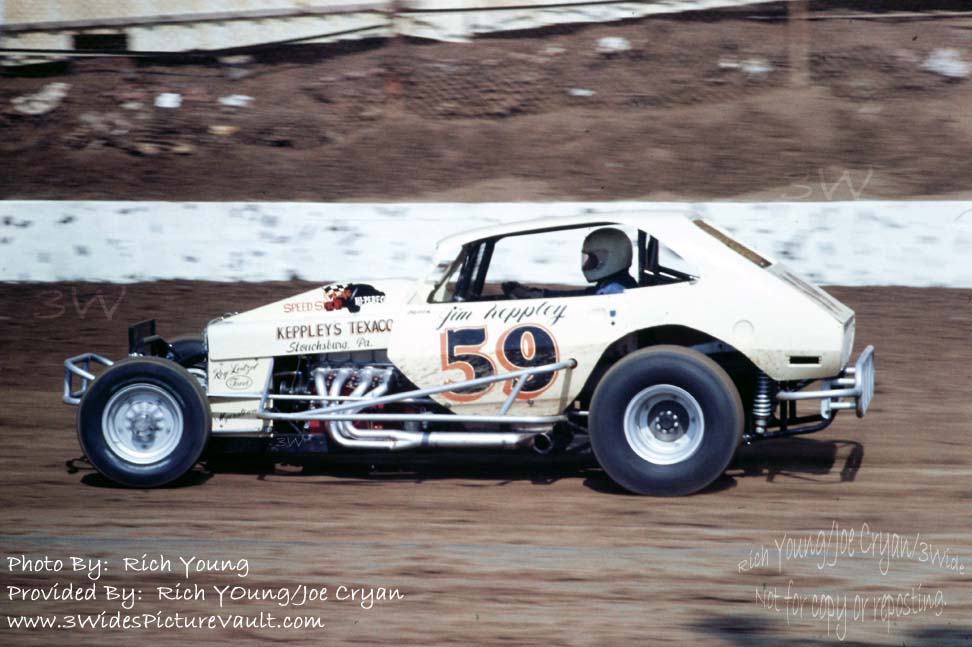| 03.13.18 |
Terry Fick |
My guess would be this is modified
Hotchkis suspension.
I believe by 1975 most modifieds were running a sprint car type suspension,
a live axle with birdcages. The days of the solid axle were about over.
Either Jim was running a live axle with the cages mounted to the links or a
solid axle with conventional mounting.
The link was probably mounted forward of the axle centerline, attached to
the axle, and the entire assembly was supported by the coil over in the
rear. The coil over looks fairly plumb which is the trick with springs and
shocks, you want as vertical an instillation as possible so as to minimize
varying spring rates and shock dampening. The only consideration here is
converting the spring rate and shock dampening to compensate for the
distance between the spring mounting point and the axle center line.
The only drawback I would consider is with a bird cage design the tire can
move in a more vertical axis since the cage can pivot under load. With a
solid mount, my assumption, the tire will have a more decided arc which will
effect the side bite, especially going into a corner. That said the arc
would camber the tires for the desired side bite, my question is just how
progressive would the side bite be - in other words as the outside ride
height gets lower (more side bite) how does the handling of the car change?
Would hitting a bump or rut dramatically increase the side bite prompting a
push when the rear end digs in? Or the opposite? In all this theory consider
we are talking probably a degree or two, but that little bit, at speed and
under load, makes a big difference.
Anyway, just my thoughts after studying the photo. If nothing else we now
have a bench racing topic until the season gets in full swing. |
| 03.19.18 |
John Mc |
The rear suspension on the 59 appears to be a
cantilever type, similar to what many cars were trying on the front around
this time. There was a vertical link mounted to the top of the rear axle
which connected to a cantilever arm mounted parallel to the frame and
pivoted in the center or near the center, depending on the ratio desired.
The other end attached to the top of the coilover shock, which mounted to
the frame on the bottom. It also lengthened and lowered the spring base,
transferring weight to the back of the car during acceleration. |
